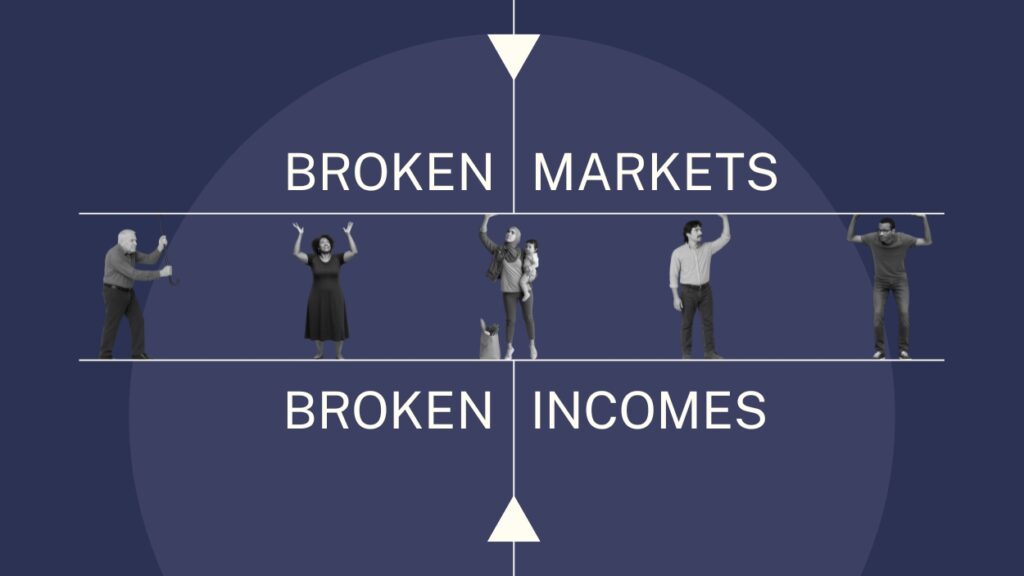It is as well to be honest…
In 1946 George Orwell published an essay in defence of P.G. Wodehouse. Why did Wodehouse need defending and how did Orwell defend him?
Wodehouse and the Nazi broadcasts
In summer 1940 P.G. Wodehouse was living at his house in Le Touquet on the French coast when the Germans launched their lightning attack on France. In May he was captured by German forces and then sent to a series of internment camps – at Lille, Liege and then to Tost in Upper Silesia. In total he spend just over a year in captivity. Then, to his own surprise, in June 1941 he was transferred to the Adlon Hotel in Berlin and invited to make radio broadcasts for the Nazis. You can read a really detailed account here:
Wodehouse recorded five broadcasts, starting on 28 June 1941. They gave a light-hearted account of his own experiences, along with humorous opinions on the war and politics. The quotes from the broadcasts I’ve read are very funny in the typically light-hearted Wodehouse manner:
Young men, starting out in life, have often asked me, ‘How do I become an Internee?’ Well, there are several methods. My own was to buy a villa in Le Touquet on the coast of France and stay there till the Germans came along. This is probably the best and simplest system. You buy the villa and the Germans do the rest.
Outcry in Britain
In Britain the broadcasts were seized on as embarrassing and damaging, causing uproar in Parliament and the press. Critics accused Wodehouse of allowing the Germans to score propaganda points, of giving the impression the regime was far more relaxed and tolerant than it really was. When he casually remarked that ‘whoever wins the war’ he seemed to be implying that Britain could lose and so was accused of defeatism. Soon afterwards it was learned that Wodehouse was then released from internment giving the impression that he had done a deal, ‘betraying his country’ for his liberty, opening himself to accusations of being ‘a traitor, collaborator, Nazi propagandist, and a coward’. Leading figures in the press and politics led a campaign to excoriate his name. Libraries withdrew his books and the BBC banned his work.
Orwell’s Defence
First of all, Orwell’s defence was written after the war had ended, which is to say after years of slaughter (particularly on the Eastern Front), and after the full horror of the Holocaust and the atom bomb had been revealed.
Next: for me, the key fact about the essay, the reason it’s lasted as a piece of writing, is that it combines two distinct elements. Orwell was not only a political analyst of rare insight and intelligence; he was also himself an imaginative writer, with four published novels behind him and was in the process of writing two of the greatest political novels of the century, Nineteen Eighty-Four and Animal Farm.
With the result that his essay is not just an exoneration of Wodehouse’s actions but combines shrewd literary insights into the nature and appeal of his works, plus an insightful explanation analysis of the wider political context of both the original broadcasts, and then of the press hysteria which was whipped up about them.
Orwell’s interpretation of Wodehouse’s motivation
Apolitical Orwell follows the opinion of those who interviewed him before and after the broadcasts, that Wodehouse didn’t have a political bone in his body. He was completely unpolitical and didn’t understand the political, geopolitical, diplomatic and wartime consequences of his broadcasts. He was an entertainer. He wrote musicals and plays and stories to entertain his audience. Later, Wodehouse explained that he’d received hundreds of letters from American fans worried about his wellbeing. His motivation was to address his American fans, reassure them that he was OK and, as Orwell puts it, ever the entertainer, get a laugh in the process.
America not at war with Germany It’s also important to remember that when Wodehouse made the broadcasts, America was not yet at war with Germany – that would come in December 1941 – so when Wodehouse made his broadcasts to America, plenty of other American journalists were doing just the same. The difference was that they were the Berlin correspondents for CBS etc and so were doing it via their own stations, whereas Wodehouse was doing it via Nazi radio. This was the distinction he just didn’t grasp at the time because he thought any opportunity to greet his American fans, reassure them and, as ever, turn his (internment) experiences into light-hearted comedy, was a jolly good thing.
Wodehouse thought himself American And another element is that Wodehouse regarded himself as American. He had this funny schizophrenia. Despite being a British subject, sent to a solid English public school and all the rest of is, Wodehouse had actually spent a lot of time in America from the period of the Great War onwards, in New York trying to break into musical theatre (with some success) and then in Hollywood, trying to break into the movies. In an interview given at exactly this time with Harry Flannery of the Columbia Broadcasting System, Flannery tells us that Wodehouse seemed to regard himself as an American citizen. He had contemplated naturalisation (as a US citizen) but never got round to filling in the necessary papers. In conversation, according to Flannery, he even used the phrase, ‘We’re not at war with Germany’, by ‘we’ meaning we Americans.
His American affiliation always comes as a surprise to anyone who’s only read Wodehouse’s work and is not familiar with his biography. Indeed, once the war was over, he settled in the States where he lived for the next 30 years and never returned to England.
The Nazis’ propaganda aim
Orwell points out the timing of the broadcasts which was crucial, although nobody in the wider world realised it at the time. This was because it was right on the brink of Germany’s huge invasion of Soviet Russia. I can’t put it better than Orwell himself:
Wodehouse was released two or three days before the invasion of the U.S.S.R., and at a time when the higher ranks of the Nazi party must have known that the invasion was imminent. It was vitally necessary to keep America out of the war as long as possible, and in fact, about this time, the German attitude towards the U.S.A. did become more conciliatory than it had been before. The Germans could hardly hope to defeat Russia, Britain and the U.S.A. in combination, but if they could polish off Russia quickly — and presumably they expected to do so — the Americans might never intervene. The release of Wodehouse was only a minor move, but it was not a bad sop to throw to the American isolationists. He was well known in the United States, and he was — or so the Germans calculated — popular with the Anglophobe public as a caricaturist who made fun of the silly-ass Englishman with his spats and his monocle. At the microphone he could be trusted to damage British prestige in one way or another, while his release would demonstrate that the Germans were good fellows and knew how to treat their enemies chivalrously. That presumably was the calculation, though the fact that Wodehouse was only broadcasting for about a week suggests that he did not come up to expectations.
So Wodehouse was allowed, indeed encouraged, to broadcast to America, at a strategically vital moment. But Orwell thinks the Nazis’ motivation for doing this was mistaken, and based on a misreading of Wodehouse’s works.
The Nazis’ misunderstanding of Wodehouse
Orwell argues that to those outside the world of Wodehouse fandom, to those with only a superficial knowledge of his works, they seem on the face of it to mock and ridicule, to satirise and therefore undermine, the English aristocracy. Bertie Wooster is just the most notable of his gallery of upper-class twits, which stretches out to include the other members of the notorious Drones Club, as well as the extremely dim Lord Emsworth, his dimwit son Freddie, and a raft of other comic caricatures.
Orwell suggests that the Nazis made the mistake that other foreign readers of Wodehouse frequently do, of thinking all this amounted to blistering satire and critique. And so they, the Nazis, mistakenly thought that encouraging Wodehouse to broadcast to America would play to the very large constituency in US culture which despised Britain and its tottering empire. It would remind those groups of anti-Brits just why they despised Britain with its hoity-toity class system, led by feeble aristocrats like Neville Chamberlain, and so give them ammunition to keep America out of Britain’s war.
But, Orwell, argues, this interpretation of Wodehouse’s works is hopelessly wrong. Wodehouse’s satire of the English upper classes derives from love and affection for them, the same soft-headed affection shown by his countless fans, not least because (second point) they are a kind of dream or fantasy. Wodehouse’s works never had anything to do with real life.
Orwell’s interpretation of Wodehouse’s worldview
To explain this in more detail, Orwell’s essay takes a major detour into an analysis of Wodehouse’s work, in which he identifies a number of key strands:
1. Wodehouse was not a critic of the upper class
Wodehouse was not anti-British or anti-upper class. Orwell cites an Indian nationalist who made this mistake, and thinks the Nazis made the same one. Because:
Wodehouse’s attitude towards the English social system is the same as his attitude towards the public-school moral code — a mild facetiousness covering an unthinking acceptance.
The Earl of Emsworth is funny because an earl ought to have more dignity, and Bertie Wooster’s helpless dependence on Jeeves is funny partly because the servant ought not to be superior to the master.
An American reader can mistake these two, and others like them, for hostile caricatures, because he is inclined to be Anglophobe already and they correspond to his preconceived ideas about a decadent aristocracy.
2. Wodehouse not satirical enough
This is all the clearer to Orwell, because of his genuine left-wing views. From Orwell’s progressive point of view, the thing about Wodehouse is he is nothing like satirical enough.
Wodehouse’s real sin has been to present the English upper classes as much nicer people than they are. All through his books certain problems are constantly avoided. Almost without exception his moneyed young men are unassuming, good mixers, not avaricious.
In other words, Wodehouse’s upper class characters are nowhere as grasping, greedy, scheming, as reactionary and prepared to use violence, to call in the police and army to preserve their privileges, as the actual British ruling class very obviously was.
3. Wodehouse’s datedness
Wodehouse’s subject matter and style were fixed much earlier than people think. People associate him with the bright young things of the 1920s and ’30s but his characters were actually first invented during the Great War, and don’t reflect the young people of the Jazz Age so much as the knuts, the beaux and the macaronis of the late Edwardian era. They were old-fashioned and nostalgic from the start. Bertie Wooster makes his first appearance in a short story in 1915. Lord Emsworth and the idyllic world of Blandings Castle, also first appeared in 1915. What may be my favourite Wodehouse character, Psmith, first appeared in 1908!
Obviously over the following years, the characters are smoothed out and rounded and Wodehouse became more adept at handling a novel-length plot, but the characters and their essence were defined long before the Great War ended, and in a world before the arrival of the Jazz Age.
Superficially, in lots of details – like fast cars, the telephone, cocktails, the Modern Girl and so on – Wodehouse nods to the accessories of the 1920s and ’30s. But precisely what his fans love about his works is their sense of timelessness, agelessness, evoking a paradisiacal world of childish innocence and silliness.
His picture of English society had been formed before 1914, and it was a naЇve, traditional and, at bottom, admiring picture… In his radio interview with Flannery, Wodehouse wondered whether ‘the kind of people and the kind of England I write about will live after the war,’ not realising that they were ghosts already.
‘He was still living in the period about which he wrote,’ says Flannery, meaning, probably, the nineteen-twenties. But the period was really the Edwardian age, and Bertie Wooster, if he ever existed, was killed round about 1915.
Wodehouse’s world feels so prelapsarian because it is essentially as if the Great War and all the horrors which followed from it (anarchy across Europe, revolution in Russia and its threat elsewhere, the rise of fascism) had never happened. He mentions some of these things in his stories but they’re not real, they have no impact on the hermetically sealed world of his fictions.
4. Orwell dismisses Wodehouse’s ‘Fascist tendencies’
Some of Wodehouse’s critics in Britain used the controversy to go hunting through his fictions in search of ‘fascist tendencies’. Orwell thinks this is ludicrous. First because there are none, and second because there are no political tendencies of any kind in Wodehouse’s works precisely because, as explained above, they don’t exist in the real world.
It is nonsense to talk of ‘Fascist tendencies’ in his books. There are no post-1918 tendencies at all.
Wodehouse didn’t realise how Britain had changed by 1941
I’ve mentioned the importance of the date in connection with the German invasion of Russia. But there was also a domestic, UK-based aspect to the broadcasts’ timing, which Orwell brings out and which is very interesting to anyone interested in the history of the period. This is that the mood of the nation, of Britain, changed drastically, between the date of Wodehouses’s arrest (June 1940) and the date of the notorious broadcasts (June 1941).
When Wodehouse went into internment, we were still in the phoney war. After Germany’s invasion of Poland, there was a long lull in hostilities. Popular feeling about the ‘war’ was very half-hearted. There was hardly any fighting, the Chamberlain Government was unpopular, eminent publicists were hinting that we should make a compromise peace as quickly as possible, trade union and Labour Party branches all over the country were passing anti-war resolutions. Wodehouse took that mindset, that the war was still a bit of a joke, into captivity.
It was only after he was locked up that things began to get serious. He would only have heard garbled accounts of the panic-stricken evacuation of Dunkirk (May 26 to June 4 1940) and nothing about what followed, namely the Battle of Britain (July 10 to October 31 1940) and then the Blitz (7 September 1940 to 11 May 1941). Suddenly the war became intense and real as Brits started to die and our country was faced with the real threat of invasion and then tyranny under the Nazis. After the fall of France the Battle of the Atlantic intensified as German submarines were able to use bases all along the French coast to sink merchant ships in an attempt to starve Britain into submission. Winston Churchill had replaced Neville Chamberlain as Prime Minister in May 1940s but it was only later that year that he started to give the famous speeches designed to rally a nation which was now really under siege and serious threat of defeat. The war became immensely real to every citizen and a matter of real life and death.
All this Wodehouse, insulated in a succession of internment camps, completely missed. Which helps explain why his references to the war in the broadcasts retained the half-hearted, jokey tone of the phone war.
Thus Wodehouse was a man out of time in two distinct senses: 1) stuck in an Edwardian world of toffs and valets, he had never been a part of the modern world; and 2) he was still stuck in the light-hearted mindset of the phoney war. No wonder his broadcasts to Americans making light of the whole thing triggered such outrage in British listeners who were suffering under rationing, were dying in mass bomber raids, whose husbands and sons were being sunk in British ships on the high seas. How dare he treat the whole thing as a joke?
Class war
Finally, Orwell makes another political point, a point about class inequality and political power in wartime Britain. Orwell suggests that the furore stirred up around Wodehouse was very convenient for the powers that be because it distracted attention from their own, far worse, sins.
For the two years following Dunkirk, British morale depended largely upon the feeling that this was not only a war for democracy but a war which the common people had to win by their own efforts. The upper classes were discredited by their appeasement policy and by the disasters of 1940, and a social levelling process appeared to be taking place. Patriotism and left-wing sentiments were associated in the popular mind, and numerous able journalists were at work to tie the association tighter. Priestley’s 1940 broadcasts, and ‘Cassandra’s’ articles in the Daily Mirror, were good examples of the demagogic propaganda flourishing at that time.
In this atmosphere, Wodehouse made an ideal whipping-boy. For it was generally felt that the rich were treacherous, and Wodehouse — as ‘Cassandra’ vigorously pointed out in his broadcast — was a rich man. But he was the kind of rich man who could be attacked with impunity and without risking any damage to the structure of society.
To denounce Wodehouse was not like denouncing, say, Beaverbrook [owner of the right-wing Daily Express]. A mere novelist, however large his earnings may happen to be, is not of the possessing class. Even if his income touches £350,000 a year he has only the outward semblance of a millionaire. He is a lucky outsider who has fluked into a fortune — usually a very temporary fortune — like the winner of the Calcutta Derby Sweep. Consequently, Wodehouse’s indiscretion gave a good propaganda opening. It was a chance to ‘expose’ a wealthy parasite without drawing attention to any of the parasites who really mattered.
Plenty of rich, powerful and influential people had actively supported Hitler and the Nazis in a far more flagrant and treacherous manner than Wodehouse ever did. So they were more than happy to use their influence and their outlets (such as the press) to distract attention from their own scandalous record and bring the nation’s wrath down on the head of this poor naive sap who only ever intended to amuse his audience.
7. Orwell’s conclusion
Orwell concludes that:
- yes, the broadcasts were a mistake
- yes, they caused immense offence in Britain
- yes, they were seen as undermining the all-important morale and social cohesion of a nation fighting for its life
- but Wodehouse was a political innocent who simply didn’t grasp the content or implication of what he was doing
- and so he should not be judged as though he were a conscious and deliberate political actor or propagandist
Wodehouse’s mistake was one of naivety and lack of political awareness rather than ‘betrayal’. The intense hostility against him was driven more by wartime propaganda needs and class resentment than by genuine evidence of treason.
My conclusion about Wodehouse
Based on my own recent reading of Wodehouse, I totally buy Orwell’s interpretation. Plus it was a long time ago and nobody cares now.
My conclusion about Orwell
Isn’t it an awesome essay? It’s just packed with ideas. These days, although I read political journals (the Guardian, the New Statesman, the Conversation, the Atlantic) I rarely actually read the articles but just skim them in order to get to the amusingly caustic comments – and this is because so many modern articles, if you actually read them, so often stretch half an idea or insight out for 1,000 or 1,500 words, padded out with quotes and truisms, and leaving you wondering why you bothered.
Whereas this brief essay, just 4,100 words long, is absolutely packed with insights, wisdom and common sense. What an amazing mind, and what a clear, fluent and compelling writer Orwell turned himself into.
Related links
All Orwell’s major works are available online on a range of websites. Although it’s not completely comprehensive, I like the layout of the texts provided by the University of Adelaide Orwell website.
Related reviews







